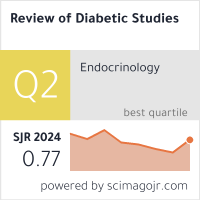Clinical Study Of Pathadya Churna In The Management Of Ulcerative Colitis
DOI:
https://doi.org/10.70082/92te2e85Keywords:
Ulcerative Colitis, Kshataja Grahani, Grahani Roga, Pathadya Churna, Yoga, Ayurveda, Inflammatory Bowel Disease, SCCAI, Deepana, Ama Pachana.Abstract
Background:
Ulcerative colitis (UC), a chronic inflammatory bowel disease with remitting-relapsing characteristics, manifests with symptoms such as rectal bleeding, diarrhea, abdominal pain, and tenesmus. In Ayurvedic texts, UC closely resembles Kshataja Grahani, a subtype of Grahani Roga, characterized by impaired Agni (digestive fire), Ama accumulation, and chronic gastrointestinal symptoms. Modern treatments often yield suboptimal results, highlighting the need for integrative approaches.
Objective: To evaluate the efficacy of Pathadya Churna, a traditional Ayurvedic formulation with Deepana, Pachana, Grahi, and Ama Pachana properties, in managing mild to moderate UC compared to standard allopathic therapy.
Methods: A randomized clinical study was conducted on 50 patients aged 20–70 years diagnosed with mild to moderate UC. Patients were randomly assigned to Group A (n=25) receiving Mesalamine (1.2 g BD) and Group B (n=25) receiving Pathadya Churna (3 g BD) for 3 months. Clinical evaluation included the Simple Clinical Colitis Activity Index (SCCAI), subjective symptom grading (e.g., abdominal pain, blood in stool, tenesmus), and objective parameters (e.g., bowel frequency, ESR, hemoglobin). Statistical analyses involved paired t-tests, ANOVA, Friedman test, and chi-square tests.
Results: Both groups showed statistically significant improvement in Agni status and SCCAI scores. Group B exhibited greater improvement in digestive fire (Agni) and subjective parameters like appetite and general well-being (p<0.05). Group A demonstrated slightly better relief in abdominal pain and tenesmus. Overall, Group B had a more pronounced reduction in SCCAI scores over time (p=0.025 vs. p=0.026 in Group A), though intergroup differences post-treatment were statistically non-significant.
Conclusion: The application of Pathadya Churna presents a promising Ayurvedic and holistic alternative in the management of UC, demonstrating comparable or superior outcomes to standard therapy. Yoga asanas have also been described which provide additive benefits. This combined approach leverages the multi-dimensional effects of Pathadya Churna—anti-inflammatory, immunomodulatory, and digestive-enhancing—alongside the mind-body benefits of yoga. This supports its clinical utility in holistic UC management. Further large-scale and long-term studies are recommended to validate and expand upon these findings.
Downloads
Published
Issue
Section
License

This work is licensed under a Creative Commons Attribution-ShareAlike 4.0 International License.


